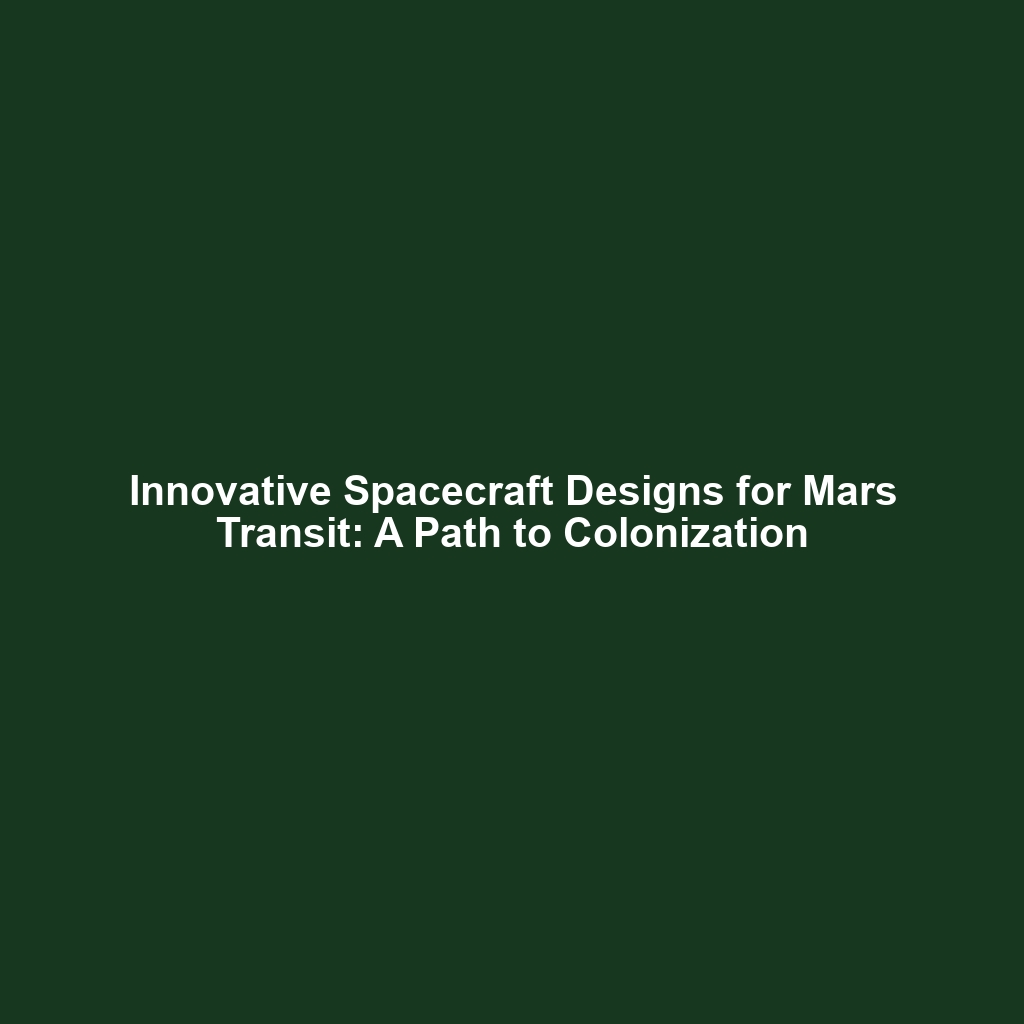Spacecraft Design for Mars Transit: Current and Proposed Models
Introduction
The quest to colonize Mars has sparked significant advancements in spacecraft design for Mars transit. As humanity sets its sights on establishing a permanent presence on the Red Planet, the creation of efficient and reliable spacecraft becomes crucial. This article delves into both current and proposed spacecraft models that facilitate long-haul travel to Mars, highlighting their design intricacies and technological innovations. Understanding these developments is pivotal in paving the way for successful Mars colonization and exploration.
Key Concepts
When discussing spacecraft design for Mars transit, several key concepts emerge:
1. Propulsion Systems
Propulsion systems play a vital role in spacecraft design. Efficient, long-range propulsion methods, such as nuclear thermal propulsion and ion propulsion, are under consideration for Mars transit, as they offer enhanced fuel efficiency and reduced travel time.
2. Life Support Systems
Life support systems are essential to support human life on extended missions. These systems include advanced air and water recycling technologies, food production methodologies, and radiation shielding.
3. Habitat Modules
For successful colonization, habitat modules must be designed to provide shelter, workspaces, and living quarters for astronauts. Innovations here include expandable habitats that can be deployed upon arrival on Mars.
Applications and Real-World Uses
The applications of spacecraft design for Mars transit are significant as they relate to colonizing Mars. Current models like SpaceX’s Starship aim to demonstrate how robust spacecraft can be strategically used for crewed missions. Other proposed designs, such as NASA’s Orion spacecraft, showcase potential uses in both crew transport and as logistical support for Mars missions.
Current Challenges
Despite exciting advances, several challenges hinder the development of spacecraft design for Mars transit. Some notable issues include:
- Radiation Exposure: Spacecraft must be equipped to protect crews from cosmic radiation on long-duration missions.
- Engine Technology: Developing propulsion systems capable of sustaining long haul flights remains a technical hurdle.
- Life Support Sustainability: Ensuring effective life support systems for the duration of the journey plus extended stays on Mars poses significant engineering challenges.
Future Research and Innovations
Looking ahead, research in spacecraft design for Mars transit is set to evolve rapidly. Emerging technologies such as plasma propulsion and in-situ resource utilization (ISRU) are potential game-changers in achieving sustainable Mars missions. Breakthroughs in artificial intelligence and automation will also play a crucial role in the future efficiency of spacecraft operations and crew management.
Conclusion
In summary, the advancement of spacecraft design for Mars transit is integral to the larger goal of colonizing Mars. Understanding the current and proposed spacecraft models is essential as humanity strives to conquer the challenges of interplanetary travel. As we look to the future, continuous research and innovation will be vital. For those interested in exploring more about Mars missions and spacecraft technology, these areas are ripe for exploration and development.
